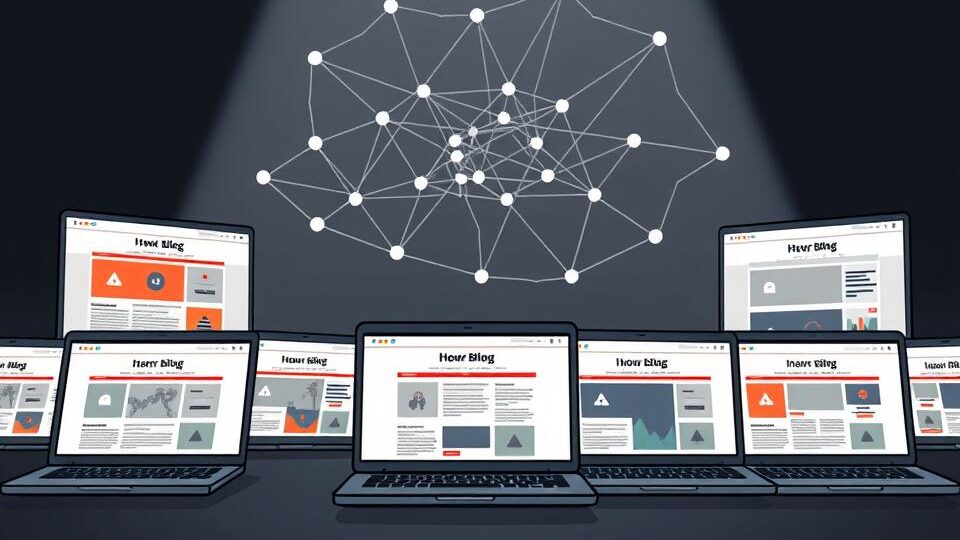
PBN Network Maintenance: Updating Content and Expired Domains
PBN Link Building Explained
Did you hear that roughly three in five SEO pros leverage private blog network backlinks? A PBN’s main draw lies in how it can elevate a domain’s credibility. This can lead to better rankings in search engines. But, what does PBN in SEO really entail? Although it appears to offer rapid ranking gains, PBN services carry substantial dangers. You risk incurring serious sanctions from Google. We’ll unpack what best private blog network are and why so many SEOs can’t resist them.
Defining a PBN
A PBN comprises multiple sites set up to generate private blog network backlinks. This method aims to increase search engine visibility by passing link equity from these sites to the primary one. By leveraging expired domains with lingering trust, PBNs present a convincing front to crawlers.
A PBN’s intent is straightforward. Marketers employ them to amplify their digital footprint. They achieve this through:
- Getting valuable backlinks to enhance rankings.
- Controlling the quality and relevance of these backlinks.
- Creating an ecosystem of interlinked blogs that appear organic.

Mechanics of PBN Backlinks
The tactic hinges on crafting backlinks that look legitimately earned. Each PBN link is engineered to deceive crawlers into thinking it’s a genuine vote of confidence.
SEO practitioners meticulously map keyword and domain usage throughout their network. While this method can quickly improve rankings, it poses significant risks.
Success hinges on embedding links in contextually relevant, high-quality content.
Why SEOs Love PBNs
A private blog network (PBN) offers numerous advantages for SEOs looking to enhance their backlink profiles. One of the primary benefits is the immediate control over backlinks.
Leveraging aged domains with residual trust is a PBN hallmark.
With PBNs, you can tailor anchor text strategy to pinpoint exact keywords.
Hazards of Using PBNs
Yet, these tactics are fraught with peril. Google’s crackdown makes PBN usage a high-stakes gamble.
Why Some SEOs Choose PBNs over Traditional Link Building
Conventional outreach can be slow and uncertain. PBNs offer a unique advantage: a sense of control over backlink strategies.
Best Practices for Managing PBNs
Avoiding footprints is critical in PBN upkeep. Ensure no footprints link your PBN to your main site.
Spotting PBN Links
Spotting PBN links on your site is key to keeping your domain reputation healthy.
| Indicators of PBN Links | Description |
|---|---|
| Low-Quality Domains | Links from domains with poor authority or less than optimal rankings. |
| Irrelevant Content | Links embedded in content that does not match your site’s niche. |
| Suspicious Anchor Text | Repetitive or irrelevant anchor text patterns. |
| Thematic Similarity | Lack of a coherent theme among linking pages and domains. |
How to Disavow Private Blog Network Links
- Identify harmful PBN backlinks through thorough analysis.
- Create a disavow file correctly, listing specific URLs or domains to disavow.
- Upload the disavow file to Google Search Console.
Ethical Link Building Alternatives
Exploring ethical link building strategies offers valuable alternatives to utilizing Private Blog Networks (PBNs). Guest blogging is a prominent option.
PBN Misconceptions
Private Blog Networks (PBNs) are often misunderstood, affecting both new and seasoned SEOs.
Where PBNs Are Headed
| Factor | PBNs | Future SEO Practices |
|---|---|---|
| Content Quality | Low emphasis on genuine content | High emphasis on high-quality, valuable content |
| Risk Factor | High risk of penalties | Lower risk with authentic practices |
| User Engagement | Limited engagement | Enhanced user interaction and loyalty |
| Sustainability | Unsustainable in the long term | Focus on sustainable growth |
The Final Word
However, the pitfalls and penalties often outweigh the benefits.